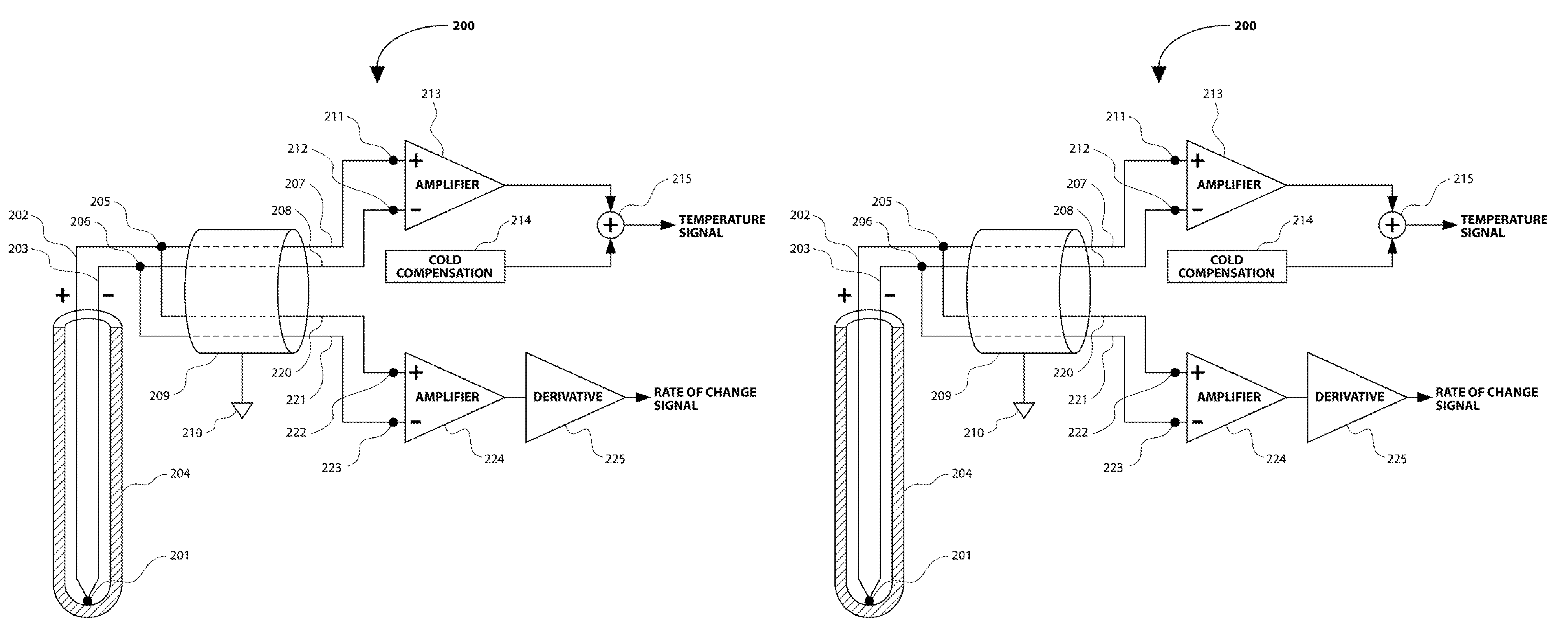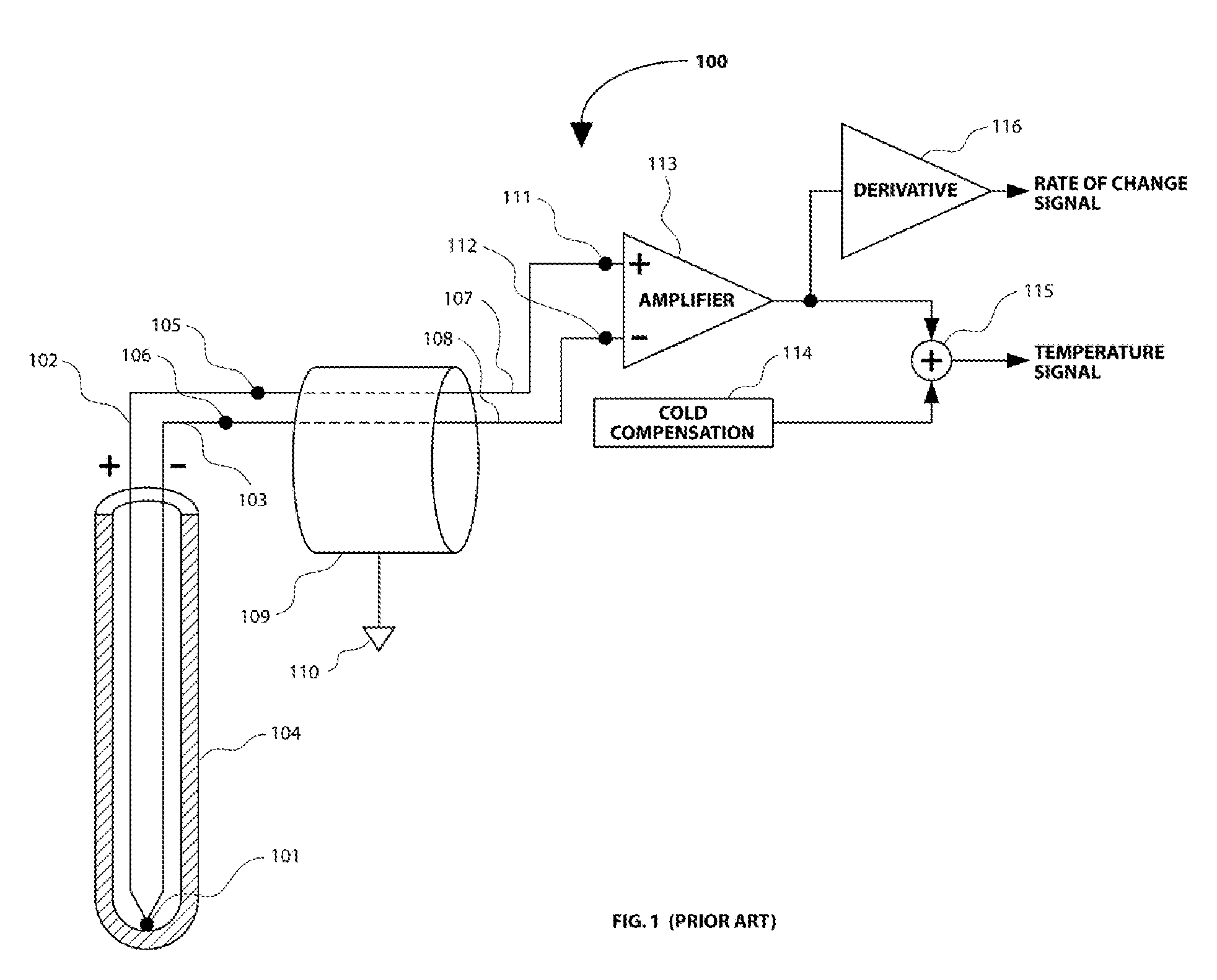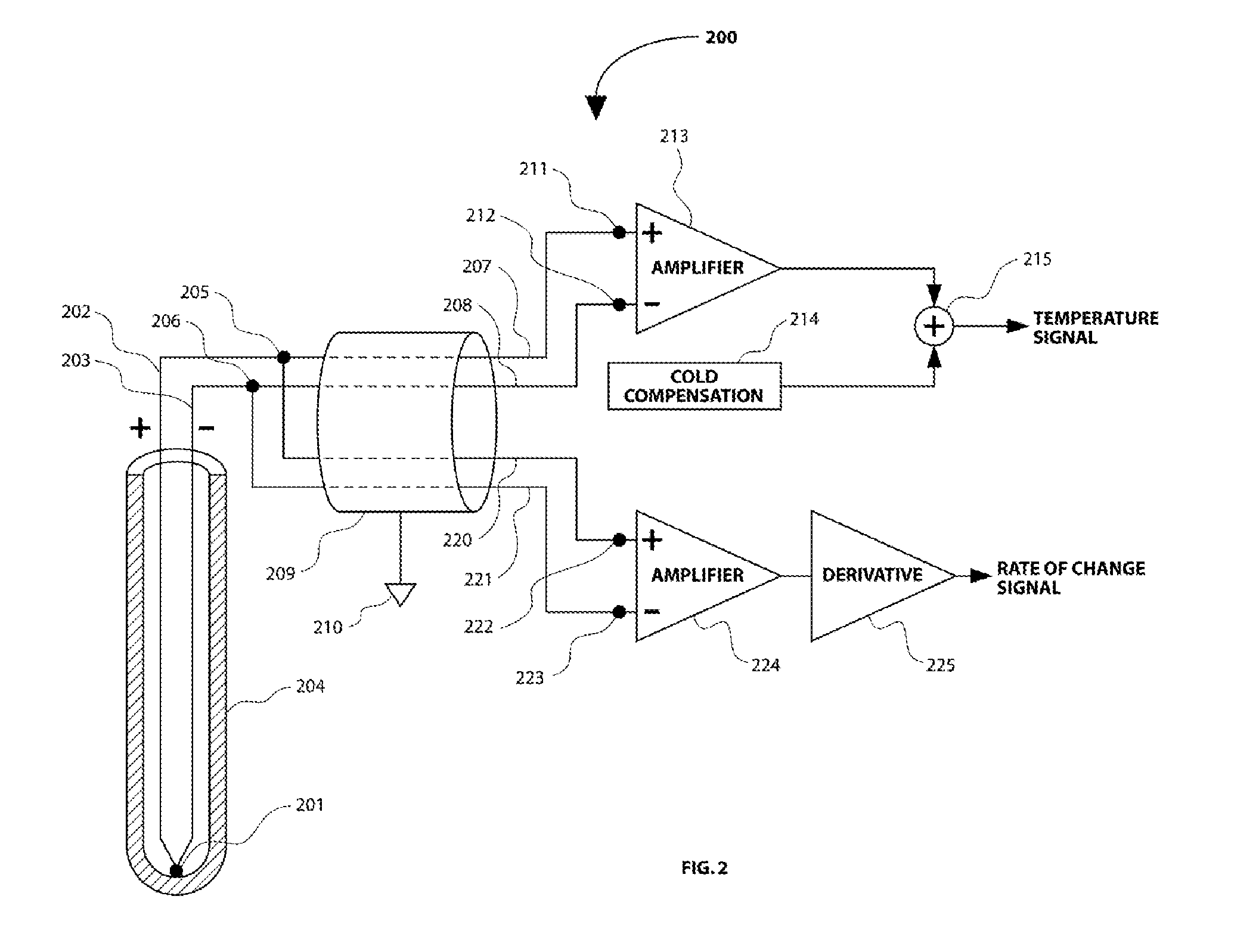Method and apparatus for measurement of temperature and rate of change of temperature
a technology of temperature and rate of change, applied in the field of measuring temperature, can solve the problems of inability to accurately measure inability to respond fast enough to track the actual temperature of the media, fragile and impractical for sustained use, etc., to eliminate or substantially minimize the disadvantages, accurate measurement of the temperature of the thermocouple, and high fidelity measurement
- Summary
- Abstract
- Description
- Claims
- Application Information
AI Technical Summary
Benefits of technology
Problems solved by technology
Method used
Image
Examples
Embodiment Construction
[0026]Turning now to the drawings and with particular attention to FIG. 1, a thermocouple measuring circuit according to prior art is shown. Prior art thermocouple measuring circuit 100 includes a thermocouple measuring junction 101, coupled to a positive thermocouple lead 102 and a negative thermocouple lead 103. The thermocouple measuring junction 101 and a portion of the positive thermocouple lead 102 and the negative thermocouple lead 103 are surrounded by a metal protection tube 104. The thermocouple measuring junction 101 is in contact with the protection tube 104 in this example. However, any of the thermocouple configurations that are known in prior art could be used for this measuring circuit and the following embodiments of the invention, including thermocouple configurations where the measuring junction is not in contact with the protection tube, is exposed outside of the protection tube, or where a protection tube is not used.
[0027]The positive thermocouple lead 102 is c...
PUM
| Property | Measurement | Unit |
|---|---|---|
| time lag | aaaaa | aaaaa |
| temperature | aaaaa | aaaaa |
| thermoelectric voltage | aaaaa | aaaaa |
Abstract
Description
Claims
Application Information
 Login to View More
Login to View More - R&D
- Intellectual Property
- Life Sciences
- Materials
- Tech Scout
- Unparalleled Data Quality
- Higher Quality Content
- 60% Fewer Hallucinations
Browse by: Latest US Patents, China's latest patents, Technical Efficacy Thesaurus, Application Domain, Technology Topic, Popular Technical Reports.
© 2025 PatSnap. All rights reserved.Legal|Privacy policy|Modern Slavery Act Transparency Statement|Sitemap|About US| Contact US: help@patsnap.com



